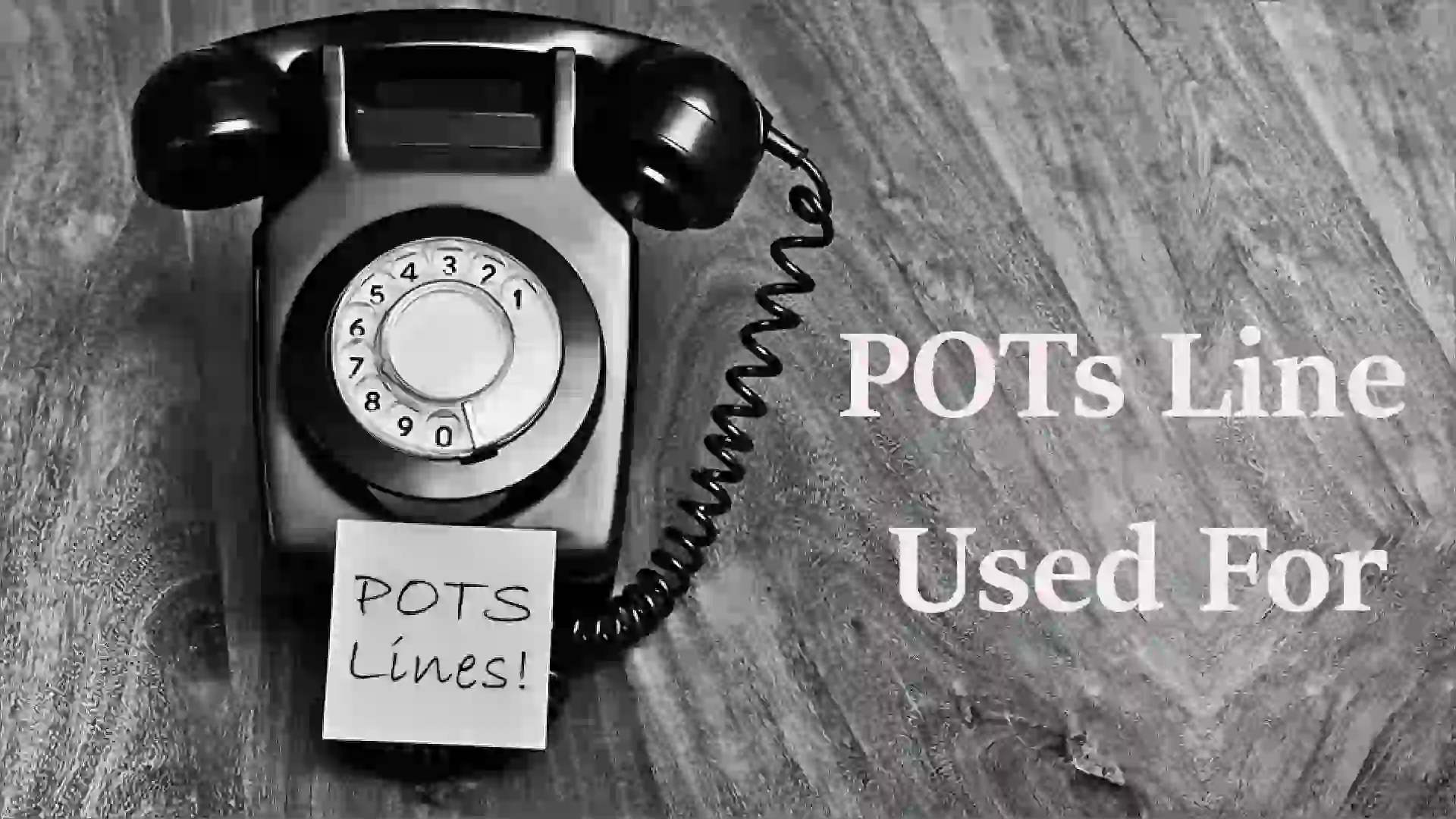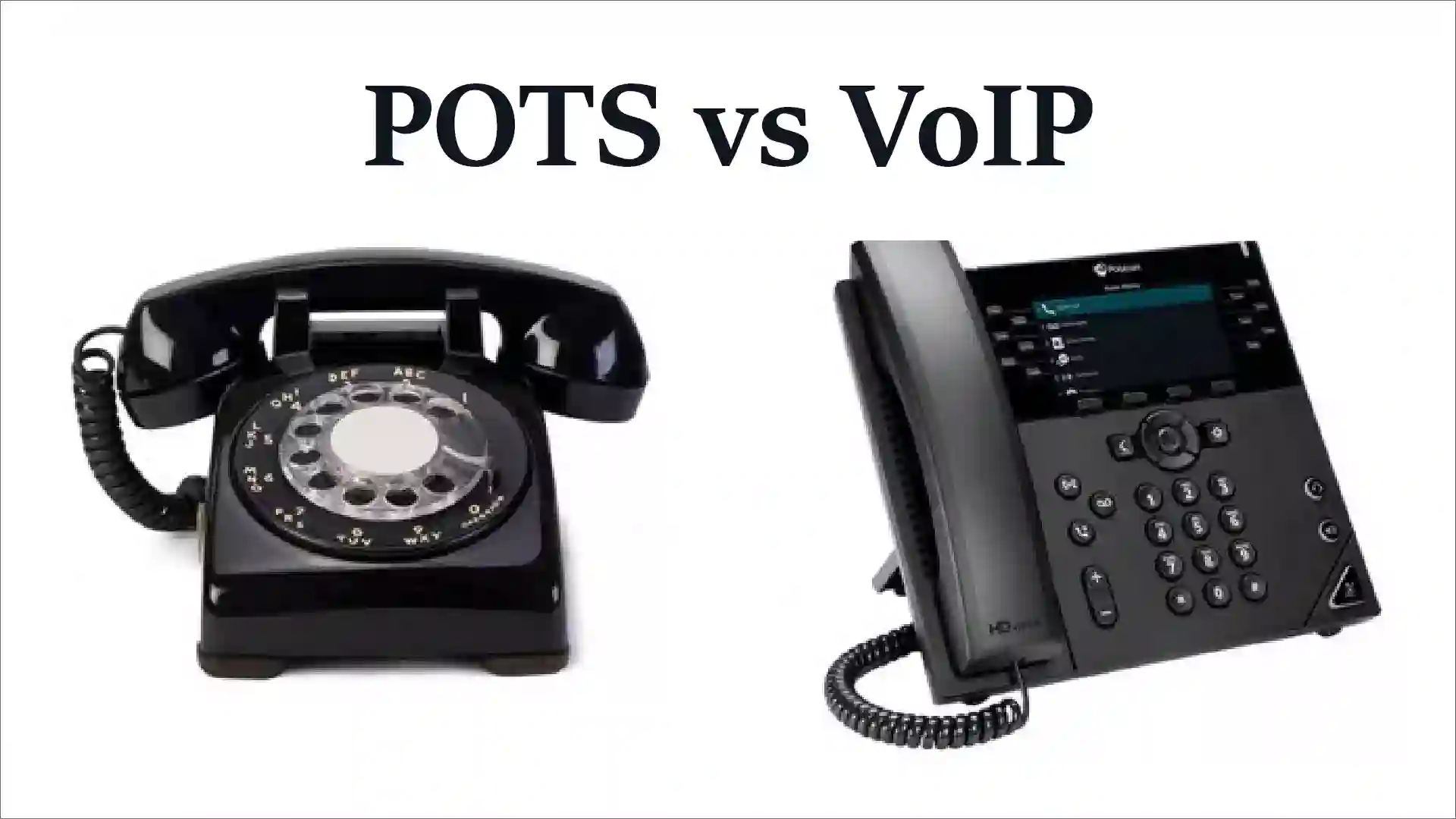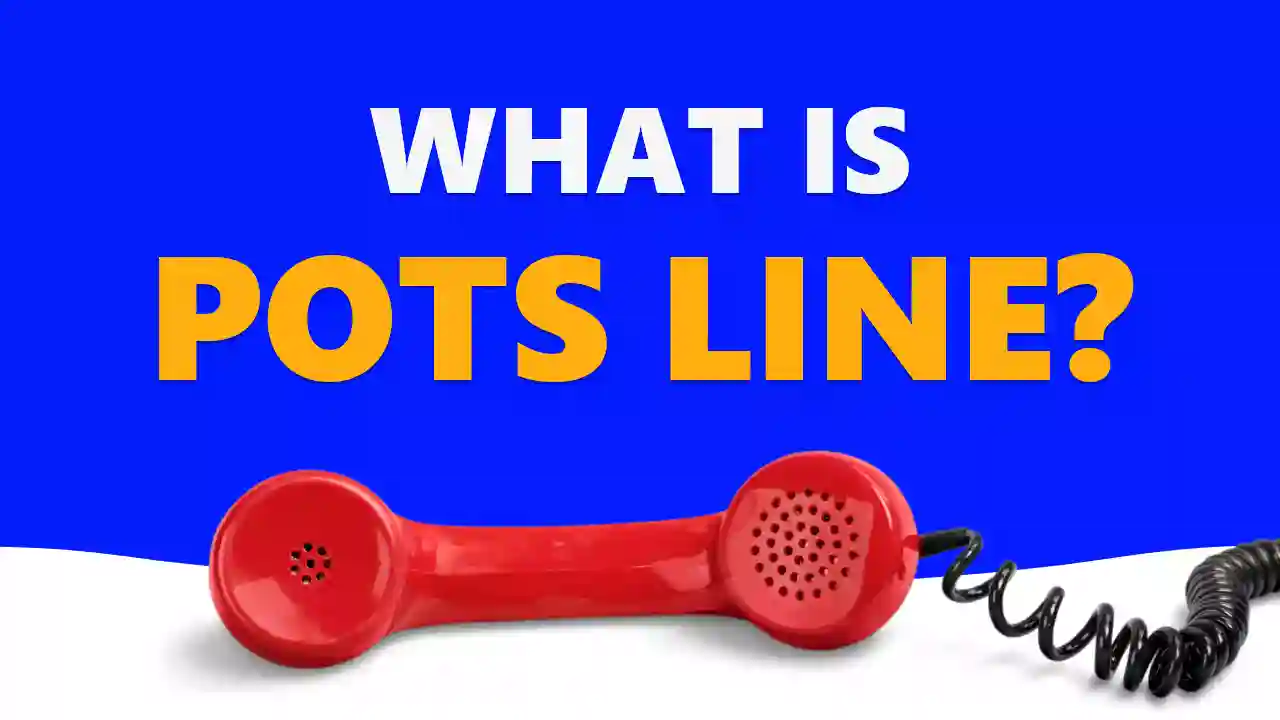A POTs line is a copper wires network connected to a standard phone that provides power and connectivity to the service provider’s central switching system.
We all know everything is going digital, including communication, such as making calls or sending messages. However, the traditional phone lines have not completely vanished.
You may have heard about POTS (Plain Old Telephone Service) line or PSTN (Public switched Telephone Network) before; these are traditional phone services, and many businesses still use them for business communication.
In the past, POTS was called the post office Telephone system, but now it is known as Plain Old Telephone Service.
Here in this article, we will describe what the POTS line is and whether it is suitable for your business in this digital age.
What Is a POTS Line?
POTS stands for Plain Old Telephone Service. When you make a phone call using a traditional handset, your voice is converted into an electric signal which travels through copper wires to reach the recipient.
During the call, the tones you hear are signals transmitted through the copper wires that connect your phone to the local exchange.
Initially, the telephone system was called Post Office Telephone Service as customers had to depend on postal office operators to manage their calls.
However, when the process became automated and was no longer associated with postal offices, it was renamed Plain Old Telephone Service, and the acronym remained unchanged.
POTS Lines Used For

In the past, making phone calls was a much more complicated process than it is today. You must rely on an operator to manually route your call to the intended recipient by connecting copper wires to a common patch panel.
The more the distance between the callers, the more time and effort the operator had to put in, which meant higher call charges.
However, Plain Old Telephone Service (POTS) introduced “switches” at specific points in the network that help reduce call costs.
These switches allowed calls to be automatically directed to local, national, or international destinations, eliminating the need for human operators.
How Do POTS Lines Work In This Digital Age?
When you make a phone call, the network switch listens to the dialed tones and interprets the phone number as the destination you want to reach. It then routes your call through one or more switches until it reaches the person or company you are trying to contact.
For traditional calls, POTS must keep the calling switches open for the entire duration of the conversation so that the electric impulses can travel between the devices. The more switches that need to remain open, especially for longer distances, the higher the call costs.
For business calls, the call is directed to a Private Branch Exchange (PBX), which acts as a switch within the company’s office and connects multiple on-site phones.
What Is The Cost Of A POTS Calling System?
One significant challenge associated with Plain Old Telephone Service (POTS) is the cost. If you want to install a new phone line in your office, you must pay for the required copper wires, hardware, and technician fees to install everything.
You must also purchase compatible PBX devices and features like call forwarding, intercom, and call transfers. Moreover, international calling and IT technician fees will add to the cost, quickly increasing the overall expenses.
However, the real problem is the rising costs of maintaining the ageing copper lines. After years of use, the telephone poles and wiring require frequent maintenance to prevent breakdowns. Replacement parts are also becoming scarce since they are no longer produced, and the number of technicians who can maintain these lines is dwindling, as many have already retired.
All of these factors make it challenging to keep POTS lines operational, and as a result, the costs of analogue phone calls in many areas are increasing.
Why There Is A Need To Replace POTS Line?
It is now crucial to consider replacing Plain Old Telephone Service (POTS) lines, and here’s why:
1. POTS Line Are Going To End Soon
The Federal Communications Commission (FCC) has announced that large telephone service providers can discontinue their POTS lines. Consequently, many major providers have transitioned to cellular or VoIP networks and ended their traditional POTS line services. Therefore, if you are looking for a reliable long-term communication solution, POTS lines are no longer viable.
2. Dependencies
Plain Old Telephone Service (POTS) lines have several limitations, including fixed locations. They only allow you to operate your telephone within the areas covered by the POTS lines. Additionally, you may be restricted from using your telephone from a specific location within your home or office. Moreover, if you plan on adding more telephones to your property, you must install more copper connections to accommodate them.
3. Cost And Maintenance
Establishing a POTS (Plain Old Telephone Service) line requires a cumbersome process of connecting end-users with an extensive copper wire network, which can be expensive and time-consuming. Maintaining the copper-wired connection also poses significant challenges, such as the need to hire someone to set it up and the responsibility to fix any damages caused by factors such as a storm.
However, with newer technologies such as cellular and VoIP landline services, wireless phone services are becoming a more cost-effective and user-friendly alternative to POTS lines.
POTS VS VoIP: Which One To Choose?

In contrast to POTS, an analogue means of communication, VoIP represents the digital equivalent. Rather than relying on hardware and cables, VoIP uses the Internet and a router for its operations. Companies are increasingly opting to switch from POTS to VoIP due to its simplicity, affordability, and broader range of features.
While mobile phones offer a middle ground, they lack a VoIP call centre’s extensive features and robustness. Although mobile phones are modern and flexible, they don’t provide features such as auto attendants, IVR, callback, and skills-based routing.
In this context, it’s worth examining how VoIP technology compares with POTS regarding mobility, cost-effectiveness, and capabilities.
Mobility
One of the major advantages of VoIP technology is its flexibility in terms of workforce mobility. With a stable internet connection and access to the VoIP service, employees can answer internet calls from anywhere, whether at home, a café, or a local park.
Moreover, employees can choose their preferred device for work and even switch between devices as needed. For instance, they can switch from a desk phone to a mobile phone and continue using the VoIP solution as long as the required software is installed.
Features
When comparing the features of VoIP platforms to PBXs, it becomes apparent that VoIP systems offer a wide range of tools that are not available in even the most advanced PBX plans. Here are some examples of the features available within VoIP:
- Video conferencing
- IVR menu
- Call recording
- Call forwarding
- Toll-free number
- Call queuing
- Text messages
One of the advantages of VoIP technology is that it provides numerous features without additional costs. Moreover, VoIP platforms can be easily integrated with various business tools used by your team, such as email platforms, CRMs, or help desks.
By having all the necessary data in one place, collaboration and teamwork can be much smoother and more efficient.
Conclusion - POTS Line
Yes, businesses still use POTS lines for communication, but it is becoming less common as newer technologies such as cellular and VoIP (Voice over Internet Protocol) are taking over.
A POTS line is a traditional phone service that uses copper wires to transmit electrical signals from a standard phone to the central switching system of the phone service provider. It works by routing calls through switches, eliminating the need for human operators.
However, POTS lines are costly to install and maintain, and many large telephone service providers are discontinuing their POTS line services. Businesses may need to replace their POTS lines with newer technologies like VoIP for more cost-effective and user-friendly communication.




